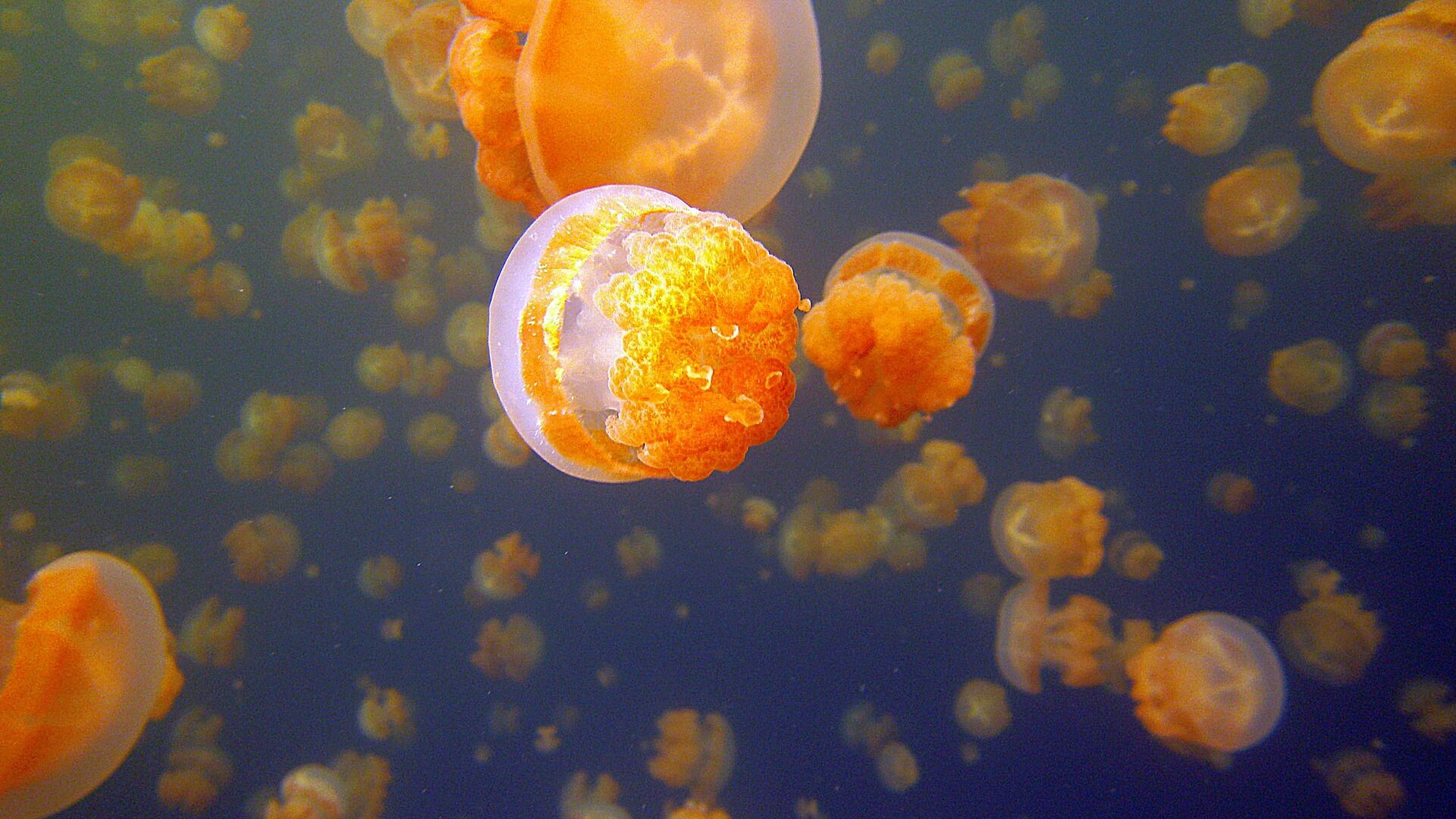https://sputnikglobe.com/20211031/jellyfish-en-masse-flood-scottish-nuclear-power-plant-causing-emergency-inactivation-1090356569.html
Jellyfish En Masse Flood Scottish Nuclear Power Plant, Causing Emergency Inactivation
Jellyfish En Masse Flood Scottish Nuclear Power Plant, Causing Emergency Inactivation
Sputnik International
Jellyfish En Masse Flood Scottish Nuclear Power Plant, Causing Emergency Inactivation
2021-10-31T02:38+0000
2021-10-31T02:38+0000
2021-10-31T02:38+0000
scotland
drones
nuclear power plant
jellyfish
reactors
environment
https://cdn1.img.sputnikglobe.com/img/106613/46/1066134637_0:257:2731:1793_1920x0_80_0_0_27780fa749b35d2beb5502090319864d.jpg
Torness nuclear power plant in Scotland had to defend itself from a huge school of jellyfish, likely attracted by the warm water that surrounds the plant’s discharge outlet, according to The Bulletin of the Atomic Scientists.The plant, located on the coast near Dunbar in East Lothian, was forced to deactivate its two reactors after a swarm of jellyfish was spotted inside the water collector. The jellyfish were sucked into the filters that screen the sea water that is supposed to cool the reactors from other sea inhabitants and seaweed.The power plant hired a private company RUAS that would provide drones to monitor the offshore area around the plant to detect the jellyfish before they approach too close.The reactors were deactivated to avoid being overheated due to lack of water, and their reactivation “is costly and time-consuming.”
scotland
Sputnik International
feedback@sputniknews.com
+74956456601
MIA „Rossiya Segodnya“
2021
News
en_EN
Sputnik International
feedback@sputniknews.com
+74956456601
MIA „Rossiya Segodnya“
Sputnik International
feedback@sputniknews.com
+74956456601
MIA „Rossiya Segodnya“
torness nuclear power plant, dunbar in east lothian, nuclear reactors
torness nuclear power plant, dunbar in east lothian, nuclear reactors
Jellyfish En Masse Flood Scottish Nuclear Power Plant, Causing Emergency Inactivation
The same incident happened in 2011, when the plant’s staff noticed that incoming water flow was reducing. Lack of water may cause overheating of the reactors, requiring their deactivation.
Torness nuclear power plant in Scotland had to defend itself from a huge school of jellyfish, likely attracted by the warm water that surrounds the plant’s discharge outlet, according to
The Bulletin of the Atomic Scientists.
The plant, located on the coast near Dunbar in East Lothian, was forced to deactivate its two reactors after a swarm of jellyfish was spotted inside the water collector. The jellyfish were sucked into the filters that screen the sea water that is supposed to cool the reactors from other sea inhabitants and seaweed.
The power plant hired a private company RUAS that would provide drones to monitor the offshore area around the plant to detect the jellyfish before they approach too close.
“The successful operation of [drones] will enable us to detect threats from marine ingress at an earlier state and prevent disruption to the power plant,” said Monica Rivas Casado, a senior lecturer in environmental monitoring.
The reactors were deactivated to avoid being overheated due to lack of water, and their reactivation “is costly and time-consuming.”

